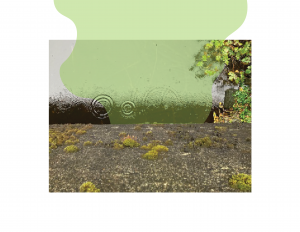
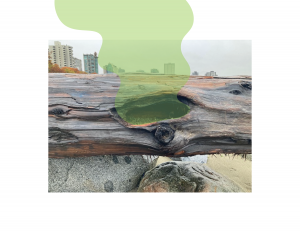
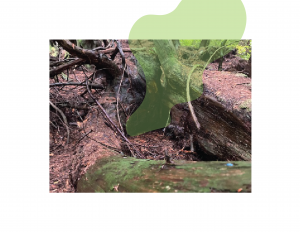
In Class: Took photos of nooks and crannies I imagined harbored some of the main smells on the walk.
At Home: Analyzed the pleasantness, reach, and sources of the main smells on commercial drive.


School of Architecture and Landscape Architecture (SALA), University of British Columbia



In Class: Took photos of nooks and crannies I imagined harbored some of the main smells on the walk.
At Home: Analyzed the pleasantness, reach, and sources of the main smells on commercial drive.

AT THE AIRPORT
For assignment 9, I decided to take smell notes in the Vancouver Airport. I arrived around dinnertime and was looking for food. I was almost hypnotized by the smell of the candy store. I’ve always had a sweet tooth and so I really love the smell of sweet things. When I think of candy, I think of bright colours, and sugar sprinkles.

I managed to abstain from the candy, however, and decided to go for pizza. Pizza is probably my favourite comfort food, so I found it really enjoyable. When I think of pizza and red wine, I think of whole, savoury smells in shades of red, orange, brown, and green.
Both of the food smells were somewhat intense. One of the other smells I would describe is “new book smell” or “magazine smell” which has a waxy, papery smell. To communicate this (and not to have it confused with “old book smell”), I tried to use bright colours and sprinkles to communicate “newness”.
The airport is a bit of a strangely designed place in that you are enticed to shop yet it’s also been designed for you to get across the building quickly. Typically you are there only when you have a plane to catch (and thus can’t linger too long). The collage below tries to convey this experience.

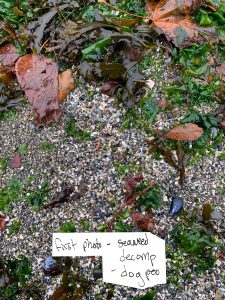
On a field trip with the class, I took photos and catalogued them in my sketchbook with what smells I was experiencing as I took them. To start off at the waters shore, I wrote how green and chlorophyllic all of the plant life smelled, as well as some other less pleasant associated smells. I also took note of how the smells reminded me of an old basement.
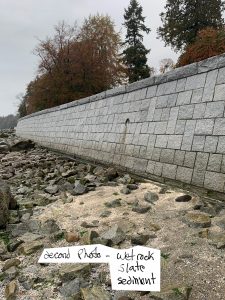
I was sure to smell the seawall and took note of how it smelt like sediments and wet stone.
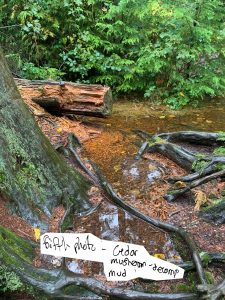
As the class moved deeper into Stanley Park, the environment changed drastically, and I was sure to document the overwhelming smell of fungi, mud, and cedar.

At home I began to map how I experienced the smells at the sites we visited. Starting with the shore, I wanted to show what I was thinking in relation to what was around me, therefore you can see my silhouette, in which is a family members basement. The shore was very mildewy and chlorophyllic which reminded me of a damp basement I had been in sometime when I was younger.
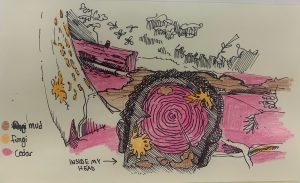
To visualize the intensity of smell while we were in Stanley Park, I represented the strength of each smell in my own head as compared to their sources around me. The smell of cedar was overwhelmingly strong, therefore the wooden element in my head is large. The smell of mud and fungi were secondary but still present, so their presence in my head is smaller. It is interesting to see the relationship between the actual physical quantity of elements producing smells compared to the strongest smells I experienced.

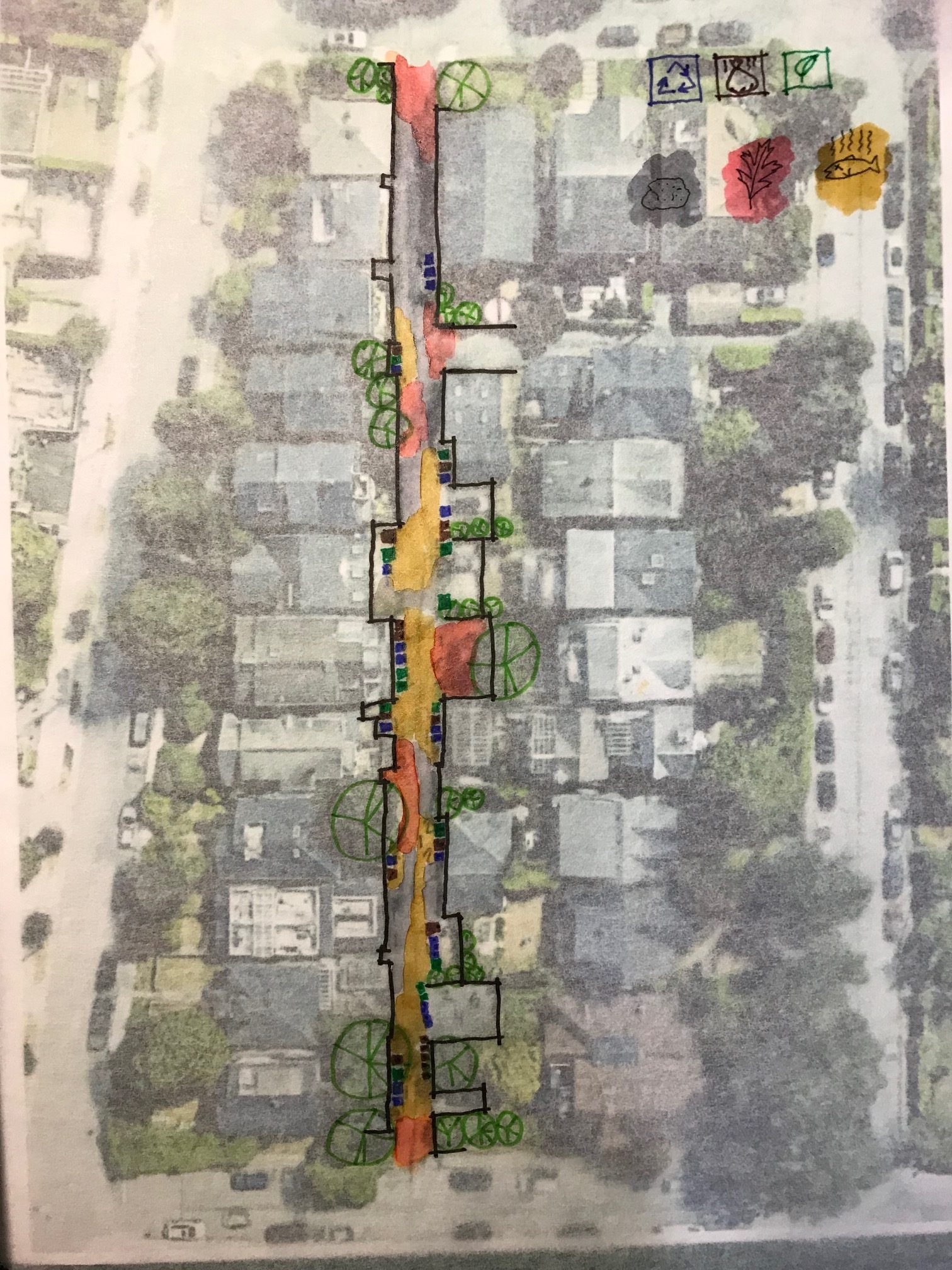
In the collage, the two smells that had the strongest scent, or smells that I picked out most easily were the familiar smell of the ocean and the smell of the cedar log. Both of these smells seemed to waft through the air, whereas the other smells required me to get up closer to get the full extent of their pungent odour, which I found to be somewhat unpleasant.
For this assignment, I walked along 4th Ave and tracked the smells that I experienced. I started off with a description and then visualized them after, with the size of the smells reflecting the intensity of the smell.

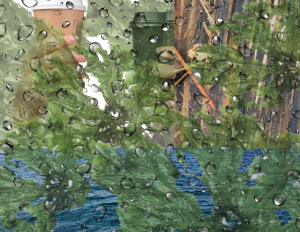
For this assignment, I ventured into a small alley in-between two condo complexes, close to 63rd avenue and Yukon Street. Because the alley was linear and well delimitated, it would give me a clear ‘sample space’ to record the smells I encountered.
Doing so was not easy, however. Olfactive science is complex, and one single, isolated smell may be the result of a myriad aromatic compounds. Plus, it was pretty cold outside that day: differentiating smells was not easy. In any case, I divided the broad smells I encountered into 3 categories, represented in the perspective and plan below.:

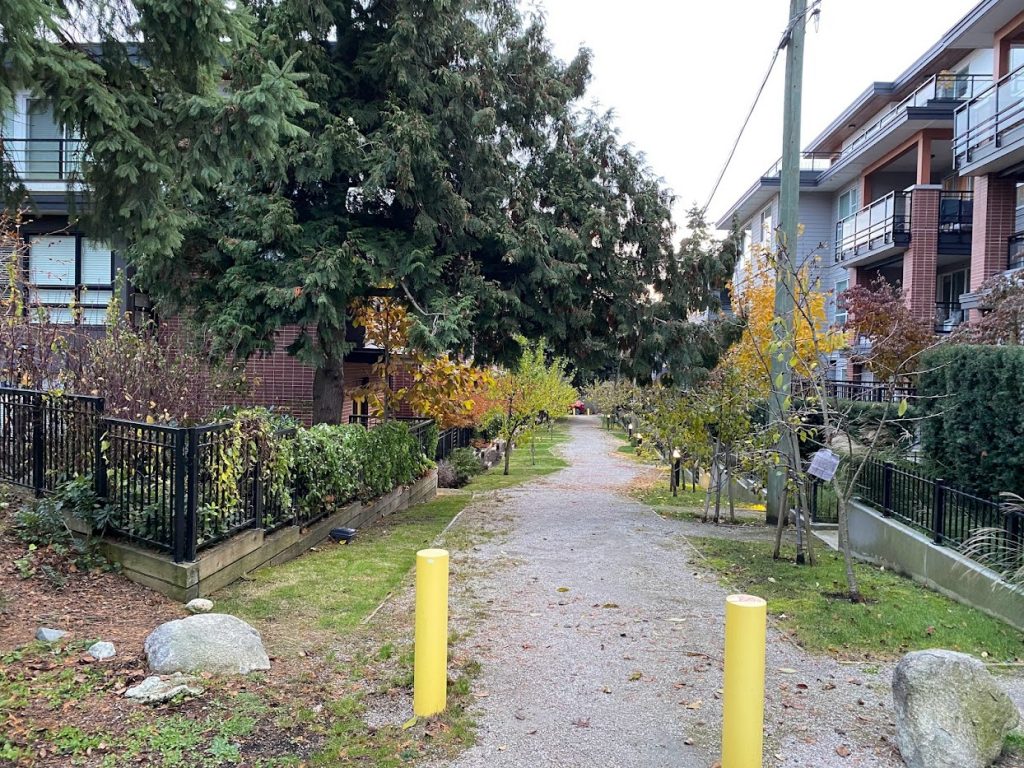
in class/at home
I am REALLY sensitive to smell, and sometimes if a smell is too strong it makes me feel ill. Ocean smell in particular has always been very unpleasant for me. This is a map of where I felt most ill at the beach. I realized the algae smell made me more ill than the seawater, which was bad too but a lot milder.
Then we walked past this playground and I remembered this fire truck.
The first time I saw the pacific ocean was when my family visited this same beach on a trip to Vancouver over ten years ago. I went swimming in the ocean and choked on the seawater because I can’t swim, and threw up. Then I went looking for seashells and found a really big one. I picked it up to show my sister. It grew legs. It was not a seashell.
It was a crab.
I threw it into the water and started crying.
A few years before that my mom accidentally served me the head of the fish at dinner. I hadn’t yet made the connection that fish the animal and fish the food were the same thing. Its eye was staring at me. I cried. I don’t eat seafood anymore, anything fishy grosses me out.
The conclusion I’ve come to is that smell is something that can be very personal. I had a bit of a tough time with this portion of the site visit, and I was surprised to see that nobody else was grossed out. I hadn’t realized that ocean smell is something that a lot of people enjoy? My experience of this particular smell is shaped not only by my biological reaction to it, but also by some of my earliest memories, and everyone else in the world experiences the same smell differently for a variety of equally valid reasons. Definitely something to be mindful of when designing.